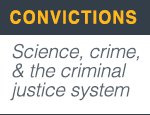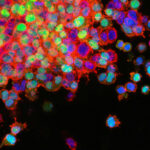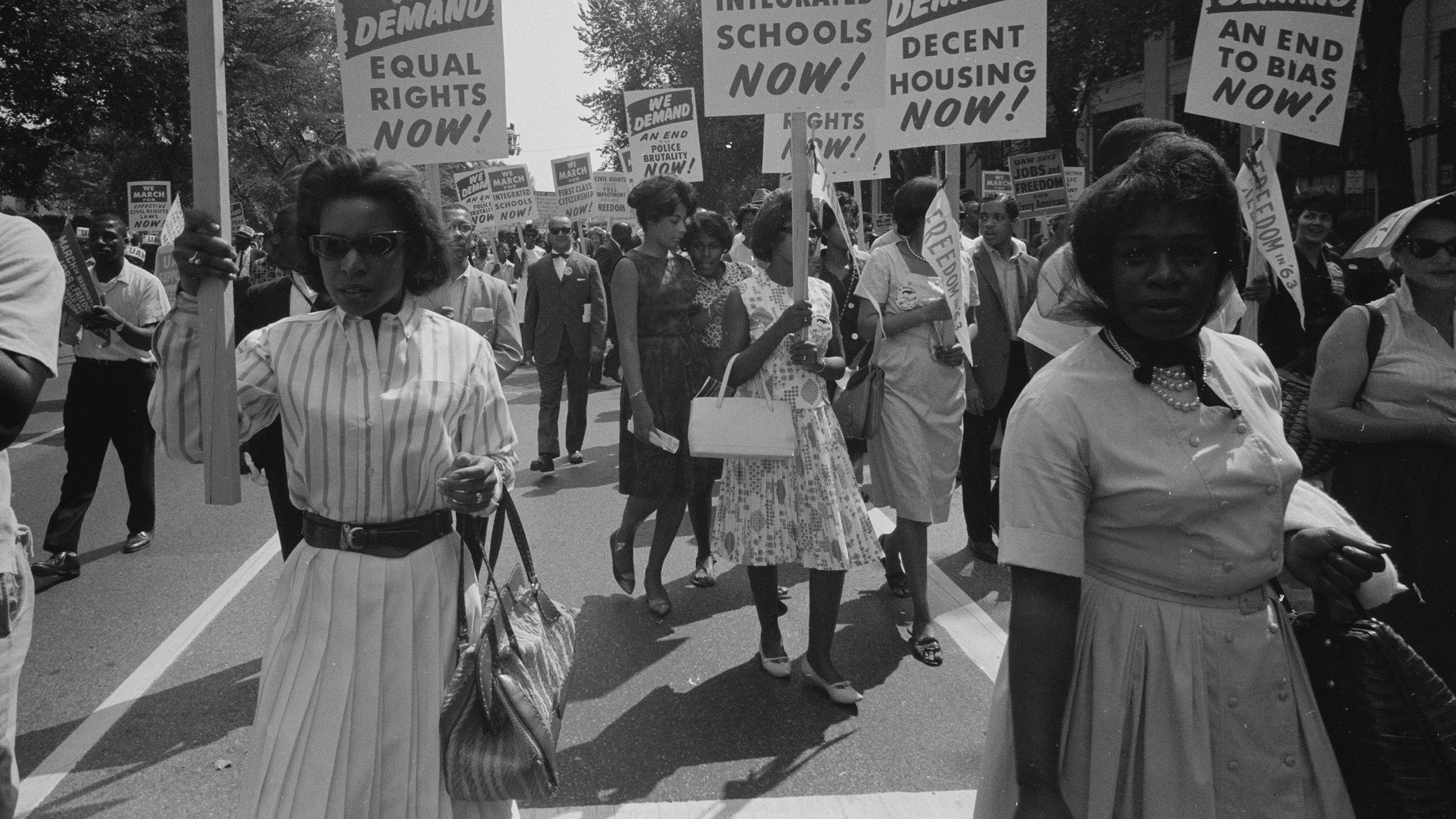In the sticky summer of 1963, Shirley Green-Reese snuck out of the house to go to a protest. She was 14 years old, a black girl from Americus, Georgia, and she had lived under Jim Crow her entire life. She didn’t think of herself as an activist, but she had heard the Reverend Dr. Martin Luther King speak on television. “I was in tune with it. I believed in it,” Dr. Green-Reese, who went on to earn a PhD and become an Americus city council member, told me recently. “My girlfriend and I decided to go to the mass meeting at Friendship Baptist Church because I wanted to get involved.”

They left while Dr. Green-Reese’s parents were out running errands downtown. It was July 15th. The girls wouldn’t see their homes again until September.
Instead, they endured false imprisonment under heinous conditions, only being released after the Student Nonviolent Coordinating Committee found them, photographed them, and drew attention to their case.
Dr. Green-Reese is one of thousands of African Americans, many of them children, who put their lives on the line in a fight for freedom during the Civil Rights Movement of the 1950s and 60s. Some of those people are famous. But many more, including Dr. Green-Reese, have gone largely unnoticed by the media and history textbooks. That’s especially true for women, and really anyone who didn’t fit the Mad Men-era model of what a leader should look like.
These people endured beatings, fire hoses, and fear. They lived under chronic and acute stress. Even the Southern black people who didn’t participate in protests lived under conditions not unlike those of a genocidal war zone, says Ruth Thompson-Miller, an assistant professor of sociology at the University of Dayton. White people, after all, sometimes bought tickets to see lynchings.
The enduring mental and physical impacts of war and violence have long been of interest psychologists, sociologists and other researchers, with diagnostic antecedents to post-traumatic stress disorder and other combat-linked pathologies — from World War I-era “shell-shock” to the mid-century coinages like “gross stress reaction” — reaching back decades. And it shouldn’t be surprising that Civil Rights activists often call themselves “veterans” — martial terminology that researchers like Carl Bell, a professor of psychology and public health at the University of Chicago, consider apt.
Given all of this, one might expect to find a wealth of studies examining the long-term physical and mental impacts of oppression and violence on Civil Rights-era veterans like Dr. Green-Reese.
Turns out, though, that those studies don’t really exist.
“You can drive a Mack truck through that hole in the literature,” said Joe Feagin, a white sociologist from Texas A&M University who has spent his career studying systemic racism.
That’s only now starting to change. As more people of color have entered the sciences, more attention has been paid to the health impacts of racism in general, Feagin said — and that research, often conducted by black scientists, is starting to provide some insights into psychological legacy of protest.
Bell, for example, has studied mental health and people of color, including the effects of chronic stress. Thompson-Miller has conducted more than 100 in-depth interviews with black people who lived through the Jim Crow era in the South. A graduate student at Texas A&M named Zinobia Bennefield is currently studying the short-term, negative health consequences for disadvantaged social groups. This research serves as important documentation of what oppression does to people — and how those people fight back.
But these research efforts remain woefully diffuse, and for now, we really don’t understand how protest and resistance against wide-scale and often violent oppression affects people over the course of their lives — open questions that experts say have important implications for young people today.
Fifty-three years ago, Dr. Green-Reese was picked up by police during a protest of her town’s segregated movie theater. Along with at least a dozen other girls — the precise number is lost to history — she was driven 30 miles in a windowless van with no seats or safety restraints. Police took them to a one-room, concrete-block shack just outside the town of Leesburg and locked them inside. There were no charges, there was no trial, but they were incarcerated anyway, under conditions that violate both national and international human rights laws.
Their only access to water was a slowly dripping showerhead. The toilet didn’t flush and quickly filled. They slept on the hard floor with only the clothes on their backs. Food was four undercooked hamburgers, per girl, per day. They used the paper the hamburgers came wrapped in to wipe themselves when they had a bowel movement. There were mosquitos. There was a rattlesnake. There was an old white man they called Pop who watched them through the barred windows and never gave them privacy. The girls were between the ages of 12 and 15 and for weeks their parents had no idea where they were.
Even after their location was discovered, there was nothing their parents could do except sneak extra food through the bars. “There was no way to get us out. There were no rights here,” Dr. Green-Reese said.
When they were finally released, there was no fanfare. Dr. Green-Reese describes being dropped back into her life, after more than two months away, with no apologies, no notice, no real acknowledgement from anyone that anything had happened. Her family took care of her, but the experience was disorienting.
Years later, as an undergraduate working in her college’s library, she found a picture of herself, locked in that building, inside a book she was shelving. She remembers slamming the book shut, embarrassed and afraid that somebody might find out the anonymous girl was her.
There is much in her story that resonates with Thompson-Miller’s research. All of her subjects reported incidents of violence that touched them or their families – kidnapping, murder, intimidation and rape. From her research, she believes that white violence in the Jim Crow-era South occurred at much higher rates than is generally acknowledged. In many cases, her subjects were telling her stories that they hadn’t told their own families, because of the sense of embarrassment and fear they still felt.
Her subjects also exhibited symptoms of post-traumatic stress disorder. “People would cry uncontrollably. People would shake. They would break out in a sweat. They’d need constant reassurance that what they told me wouldn’t be associated with them. They were still afraid that people would come and find them,” Thompson-Miller said. In Jim Crow’s Legacy, the book she wrote about these interviews, Thompson-Miller defines this as the effects of “segregation stress disorder,” a form of both individual and collective trauma.
There is no difference between that trauma and the trauma experienced by firefighters who survived the World Trade Center collapse, or military veterans returning from war in Afghanistan and Iraq, Carl Bell said. From research that’s been done on those more-acknowledged kinds of trauma, we know that there is wide variance among individuals in how the trauma affects them over the course of their lives. Some people experience many intense symptoms of PTSD, for many years after the initial trauma. Others may experience symptoms, but less frequently and less intensely.
Part of Bell’s work has been studying what factors promote resiliency, and based on this, he thinks that Civil Rights activists may have been better positioned to mitigate the impact of segregation stress disorder in their own lives than people who didn’t participate in protest movements.
That’s because a sense of helplessness is associated with worse outcomes for PTSD. Research on firefighters in Australia, for instance, has found that 33 percent of the risk of developing PTSD can be attributed to whether or not a person feels like they have the ability to change or take control of the traumatic situation. “[Fighting back] gives you a sense of empowerment, a sense of power,” Bell said. Being a part of a community working on a shared goal also helps, he said.
The effects of fighting back are likely to be complex, though, because of what we know about a concept called “John Henryism,” Zinobia Bennefield noted. John Henry is a legendary African American character from railroad lore. When the bosses tried to replace him with a machine that could drive rail spikes, John Henry challenged the machine to a race. He won, but worked himself so hard in the process that he died. In medical literature, John Henryism is a hypothesis about how the struggle to stand up in the face of the daily social stress of racism results in physical health impacts like high blood pressure.
Recent research, though, suggests that black people who score high on measures of John Henryism – basically, people who continue to strive for feelings of control and power in their lives even when things are happening to them that are out of their control – have fewer symptoms of depression. The same behaviors that can make you physically sick might also make you healthier mentally.
That connects to what Bennefield called “the Black Paradox” in mental health. “Blacks, who experience all this racial discrimination, who tend to disproportionately be in the lower socioeconomic strata, you’d expect them to have really crappy mental health. But over and over from the late 70s into today we’re finding, no, they’re pretty resilient. They’ve got interesting coping mechanisms and ways of dealing with stress,” she said.
Nobody knows exactly what factors account for those outcomes, but from her research with adolescents — an age group that would have been heavily represented among Civil Rights activists of the 1950s and 60s — Bennefield believes that family and community support is crucial. “If I’m the only black person at my job and I have to explain my hair, my food, my clothing every day there is something supportive about going home and being able to talk with my mom or my neighbor who have same experience,” she said. “So you don’t see black as an obstacle, you see it as something positive. That’s helpful to me and that decreases my stress. I need more people to help manage the emotional labor of being me.”
Ultimately, Bell and Bennefield both think that there’s reason to believe that participating in a movement to fight back against oppression could help inoculate people of color against some of the psychological impacts of being oppressed. That’s something Thompson-Miller suspects, as well. Of the people she interviewed, 20 had been active in the Civil Rights movement – participating in sit-ins, filing papers for school desegregation. They stood out to her as different.
“They had so much power. They didn’t cry. They were empowered in ways that people who didn’t do anything weren’t,” she said.
Dr. Green-Reese never participated in another protest, but she said she coped with what happened to her by working hard and then working harder. “I decided that I would move on. And I said I view this as a challenge to not let it control my entire life,” she said.
Today, Dr. Green-Reese is an accomplished professional. She holds a doctorate. She’s worked for several universities and the NCAA. She’s a city councilwoman for Americus, the town that once subjected her to false imprisonment. In 2015, she began to speak publicly about her experience for the first time – partly as a way to raise money for the local Boys and Girls Clubs, and partly because she wanted people to know, this was something that had happened to her, and that she had fought back. “I was a victim then, in 1963, but I’m not a victim now.”
Of course, that’s just Dr. Green-Reese. We really don’t know much about the thousands of other activists and protesters who endured similar abuse in countless ways, large and small, every day for decades. But Thompson-Miller says that we know enough to offer advice to young people of color today: The act of fighting back matters.
“Who fares the best? It’s clearly the people who fought back,” she said. “It might not work, but that doesn’t matter. What’s important is that you do something. It’s exhausting. You’re angry. You lose sleep. But to not do something is even worse.”
Maggie Koerth-Baker is an American science journalist, former New York Times Magazine columnist, and current senior science reporter for the website FiveThirtyEight. Keno Evol is a Minneapolis-based educator, writer, independent scholar and activist. He is the founder of “No Projection,” a company teaching literacy through spoken word and social justice theater.










